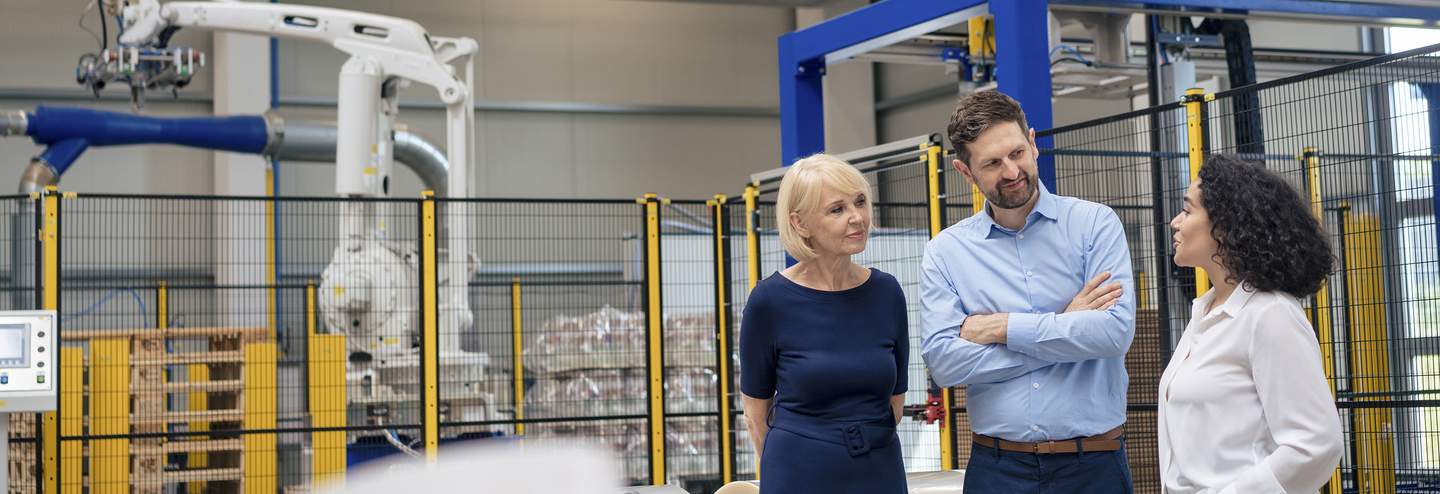The Infrastructure Law's Impact on Equipment and Machinery Owners

Since 2021, the Bipartisan Infrastructure Law (BIL) – or Infrastructure Investment and Jobs Act (IIJA) – has awarded $400 billion in federal support and is driving investments of close to $614 billion in clean energy and private sector manufacturing.1 This once-in-a-generation investment aims to improve the quality and resilience of the nation’s infrastructure so American institutions and individuals can thrive in an increasingly technologically-driven, environmentally-conscious global market.
While manufacturers, construction contractors and service providers are expected to benefit from the BIL, they – as well as any enterprise that relies on machinery and equipment – may also carry the burden of its potential impacts, especially if the influx of BIL-funded projects places additional strain on supply chains, labor markets and the nation’s power grid.
Equipment breakdowns could result in costly downtimes as infrastructure projects ramp up.
- The cost of equipment, parts and labor driven up by further demand could leave owners unprepared and possibly underinsured to absorb the expense of a loss.
- Enterprises eager to capitalize on BIL-related opportunities may bypass critical maintenance to keep production lines running, leaving their equipment increasingly susceptible to breakdowns as a result.
- Less experienced or overworked tenured technicians may be more prone to making serious mistakes when operating or servicing machinery.
- An outdated electrical grid pressed to integrate new energy sources may experience more outages and equipment-damaging surges, spikes, dips and arcs.
-
These possibilities may create a scenario where machinery owners face more frequent equipment breakdowns, resulting in longer, more costly downtimes. Those who don’t consider these impacts and fully prepare for the potential risks may find themselves at greater risk.
Related products & services
Equipment breakdown coverage
Travelers offers a broad package of specific coverages for nearly every equipment loss scenario.
Trending risk topics to explore
Our industry-leading experts share their insights on some of the many ways the Bipartisan Infrastructure Law could affect your ability to acquire or get machinery and equipment back up and running or replaced in a timely manner after an incident, as well as their advice for mitigating the impact of an equipment breakdown on your operations.
Facilities Management Safety Tips and Resources
Infrastructure Supply Chain Risks to Equipment and Machinery Breakdowns
Learn how the Bipartisan Infrastructure Law (BIL) may increase risk of equipment and machinery breakdowns and operational disruptions.

Facilities Management Safety Tips and Resources
The Impact of Infrastructure Projects on Skilled Technicians
Learn how more infrastructure projects may drain the pool of trained technicians, increasing risks of equipment and machinery breakdowns.

Facilities Management Safety Tips and Resources
Tips to Mitigate Infrastructure-Related Supply Chain and Workforce Risk
Find advice and tips for equipment and machinery owners to navigate the challenges arising from the Bipartisan Infrastructure Law (BIL).

Additional sources
Whitehouse.gov content, “Delivery Results from President Biden’s Bipartisan Infrastructure Law” — https://www.whitehouse.gov/build/
A Guidebook to the Bipartisan Infrastructure Law for State, Local, Tribal, and Territorial Governments, and other Partners, May 2022 — https://www.whitehouse.gov/wp-content/uploads/2022/05/BUILDING-A-BETTER-AMERICA-V2.pdf
Fact Sheet: Securing a Made in America Supply Chain for Critical Minerals, Feb. 22, 2022 — https://www.whitehouse.gov/briefing-room/statements-releases/2022/02/22/fact-sheet-securing-a-made-in-america-supply-chain-for-critical-minerals/
Travelers Institute® Webinar: Insuring the Rebuilding of America: What’s in the $1.2 Trillion Infrastructure Law? What Will It Mean for the U.S. Economy?, Travelers Institute, Dec. 15, 2021 — https://www.travelers.com/travelers-institute/webinar-series/symposia-series/infrastructure